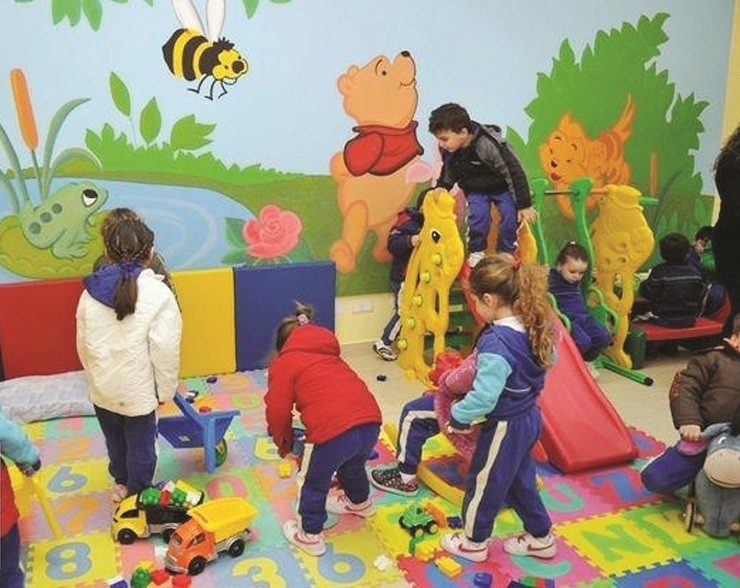
The need has now arisen to be more proactive about effective quality control measures in daycare facilities. Here’s a checklist

I was first introduced to the idea of a daycare centre when I was still working in the corporate sector. I had just given birth to my elder daughter and even though I had a strong support system at home, I did, at one point in time, consider bringing her along with me to work. That never really happened though -- mainly because the idea was a bit new-fangled to me.
That was fifteen years ago.
The situation is slightly different today. Pakistan is slowly waking up to the fact that in order for women to rejoin the workforce after having a child, it is imperative to provide them with a dependable, fully-equipped alternative childcare system. This naturally gives rise to the question: in a country like Pakistan where quality assurance is already a mammoth task, what constitutes a quality daycare centre and how does it differ from a ‘not-so-good’ one?
According to the guidelines and standardsfor daycare centres issued by the Women Development Department (WDD), government of Punjab, a set of stringent policies needs to be followed in order to establish and maintain a workplace daycare centre.
This 35-page comprehensive document -- issued mainly for daycare centres established by organisations, either in-house or out-house -- explains how the primary goal of daycare centres should be to promote the welfare, development and learning of children; and how to maintain standards of these facilities. The guidelines cover all the significant features that a good daycare facility must be equipped with, from building and space requirements to required staff to parents and children records, right down to reporting of the overall progress and process.
This year Sangat Development Foundation (SDF) launched a daycare awareness and advocacy campaign along with the Women Chamber of Commerce and Industry (WCCI). According to Asma Amir, an SDF representative, the main purpose of this campaign was to encourage organisations to apply for government grants in order to establish a fully-equipped in-house daycare facility, provided you meet the WDD eligibility criteria. "Most state-of-the-art daycare centres in Lahore are the ones in workplaces that have availed government grants, as the initial daycare costs are too exorbitant for an organisation to bear on its own. The grants take care of 70 to 80 percent of the total costs, making the job considerably feasible for the workplace," she says.
However, where an in-house facility is not available, responsibility falls on the parents’ shoulders to choose a suitable system for their children. There are a few things that they should keep in mind while doing so, according to Dr Maida Ashraf, a clinical psychologist who has worked with montessories and daycare centres. She says the number one priority of parents should be to make sure that the environment of their preferred daycare centre is homely. "Normally, parents like flashy places with bright toys and countless indoor games. What they don’t understand is that all this clutter creates an artificial environment for the child, which in turn has adverse effects on their social skills."
Ashraf further mentions that parents should ask about the qualifications of teachers and the staff turnover rates and inquire about the trainer-to-child ratio, which should ideally be one for every four infants or toddlers. "There should be CCTV cameras in the facility so that parents can keep a check on their children. Parents should also be able to drop in at the centre unannounced and inquire about the facility."
There’s also the question of whether an in-house facility is better than an out-house one. Ayesha Aziz, who works in Sustainability for a renowned company, is of the opinion that having proper childcare at the workplace makes it convenient for working mothers to be at ease mentally so they can focus on their careers. "When 17 years ago I became a mother for the first time, I was fortunate to be working in a company which had a daycare facility in the premises, so I could check on my son as many times during the day as I wanted to. Today, that centre has developed into a full-fledged facility, resulting in many women bringing their children to work," says Aziz, hoping all companies realise this and establish in-house daycare facilities.
Read also: Centres of no attention
The UNICEF Child Wellbeing Study (UNICEF, 2013) gives an insight into early years’ systems in 29 of the worlds’ most advanced economies. According to the study, in countries like Belgium and Denmark all children from zero to five years of age have a legal entitlement to early education and care and early health services. Early education is provided to address children’s development, preparedness for school, special need and reducing inequality.
In Pakistan, alternative childcare is not yet as developed as that in the advanced world; however, it is now not as alien a concept as it was a few decades back. Where we have a plethora of sub-standard daycare facilities, we have a few good ones as well. But the need has arisen to be more proactive about effective quality control measures in these facilities. It is time for women to be facilitated so they can get back to work after childbirth.